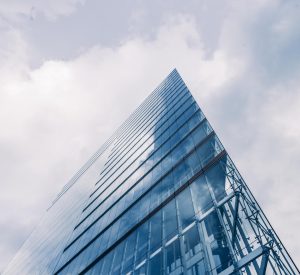
Ensuring safety and accessibility is crucial for maintenance and inspection duties in the field of commercial building management. One of the most effective ways to achieve this is through the implementation of roof access systems. These systems are designed to provide safe and efficient access to rooftops, facilitating regular maintenance, inspections, and emergency interventions. As commercial buildings continue to grow in complexity and size, the importance of robust roof access systems cannot be overstated. This article explores the key benefits of roof access systems and their role in enhancing safety and accessibility in commercial buildings.
Ensuring Safety
The primary benefit of roof access systems is the significant enhancement of safety for maintenance personnel. Working at heights is inherently risky, and without proper access solutions, the potential for accidents and injuries increases dramatically. Roof access systems, which can include ladders, hatches, guardrails, and walkways, are specifically designed to mitigate these risks.
Ladders and hatches provide secure entry points to the roof, reducing the need for personnel to use makeshift or unsafe methods to reach elevated areas. Guardrails and walkways, on the other hand, offer safe pathways for workers to move around the roof without the risk of falling. These systems are often built to comply with stringent safety standards, ensuring that they provide reliable protection against falls and other hazards.
Facilitating Maintenance And Inspection
Any business building’s durability and functionality depend on routine maintenance and inspections. In particular, roofs need to be inspected often to detect and fix problems including leaks, structural damage, and wear and tear. Roof access systems make these tasks more manageable by providing safe and efficient access to all areas of the roof.
With a well-designed access system in place, maintenance crews can quickly reach any part of the roof to perform necessary repairs or inspections. This not only speeds up the maintenance process but also reduces downtime and disruption to building operations. Furthermore, having the capacity to perform routine inspections allows for the early detection and resolution of such concerns, which ultimately saves time and money in the long term.
Enhancing Accessibility
Accessibility is another critical factor in commercial building management. Roof access systems ensure that all areas of the roof are easily reachable, facilitating comprehensive maintenance and inspection routines. This is particularly important for large commercial buildings with complex roof structures, where certain areas might otherwise be difficult to access.
By providing clear and safe routes to all parts of the roof, access systems enable maintenance personnel to perform their duties more effectively. This is especially helpful when there’s an emergency because it can be difficult to reach the roof quickly enough to solve pressing problems like severe weather damage or structural breakdowns.
Compliance With Regulations
In many regions, building codes and occupational safety regulations mandate the installation of roof access systems for commercial buildings. The purpose of these rules is to safeguard maintenance staff safety and encourage the highest standards of building management. By installing compliant roof access systems, building owners and managers can meet these regulatory requirements and avoid potential fines or legal issues.
Furthermore, compliance with safety regulations can also enhance the reputation of a commercial building. Tenants and clients are increasingly prioritising safety and compliance, and a well-maintained building with robust access systems can be a significant selling point.
Improving Efficiency
Efficiency is a key consideration in the management of any commercial building. Roof access systems contribute to operational efficiency by streamlining maintenance and inspection processes. With easy access to all areas of the roof, maintenance crews can perform their tasks more quickly and with fewer resources. This not only reduces labour costs but also minimises the disruption to building occupants.
In addition, the ability to conduct regular and thorough inspections means that maintenance issues can be addressed proactively. By extending the roof’s lifespan and preventing expensive repairs, this proactive method enhances overall efficiency.
Conclusion
Roof access systems are an essential component of commercial building management, offering numerous benefits that enhance safety, accessibility, and efficiency. These solutions guarantee compliance with safety requirements, allow routine maintenance and inspections, and increase overall operational efficiency by offering safe and effective access to rooftops. As commercial buildings continue to evolve, the importance of robust roof access systems will only increase, making them a vital investment for building owners and managers.



